CANADIAN NATIONAL
 Canadian National reported a 9 percent increase in profit for calendar-year 2011 versus calendar-year 2010.
Canadian National reported a 9 percent increase in profit for calendar-year 2011 versus calendar-year 2010.
The CN calendar-year operating ratio of 63.5 percent was a slight improvement over the 63.6 percent operating ratio for calendar-year 2010. Operating ratio is a railroad’s operating expenses expressed as a percentage of operating revenue, and is considered by economists to be the basic measure of carrier profitability. The lower the operating ratio, the more efficient the railroad.
CN said “solid operational and service performance helped CN deliver exceptional financial results.”
CN is primarily a Canadian railroad. Its U.S. holdings include what were formerly Detroit, Toledo & Ironton; Elgin, Joliet & Eastern; Grand Trunk Western; Illinois Central; and Wisconsin Central.
CANADIAN PACIFIC
 Canadian Pacific reported a 12 percent reduction in profit for calendar-year 2011 versus calendar-year 2010.
Canadian Pacific reported a 12 percent reduction in profit for calendar-year 2011 versus calendar-year 2010.
The CP calendar-year 2011 operating ratio of 81.3 was a steep increase from the 77.6 percent calendar-year 2010 operating ratio. Operating ratio is a railroad’s operating expenses expressed as a percentage of operating revenue, and is considered by economists to be the basic measure of carrier profitability. The lower the operating ratio, the more efficient the railroad.
CP said, “We exited 2011 having made meaningful progress on the three pillars of our multi-year plan: driving growth, expanding network capacity to safely and efficiently support higher volumes and controlling costs.
Canadian Pacific is primarily a Canadian railroad. Its U.S. holdings include Class I Soo Line and regional railroad Delaware & Hudson.
CSX

The CSX calendar-year operating ratio of 70.9 percent was an improvement from the 71.1 percent operating ratio for calendar-year 2010. Operating ratio is a railroad’s operating expenses expressed as a percentage of operating revenue, and is considered by economists to be the basic measure of carrier profitability. The lower the operating ratio, the more efficient the railroad. For the fourth quarter 2011, the CSX operating ratio increased to 71.5 percent from 70.0 percent for the fourth-quarter 2010.
CSX Chairman Michael Ward told investors, “Our performance in 2011 has set a strong foundation for growth.”
CSX operates some 21,000 route miles in 23 states and the District of Columbia.
KANSAS CITY SOUTHERN
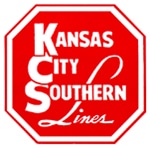
The KCS calendar-year operating ratio was 70.9 percent versus 73.2 percent for calendar-year 2010. Operating ratio is a railroad’s operating expenses expressed as a percentage of operating revenue, and is considered by economists to be the basic measure of carrier profitability. The lower the operating ratio, the more efficient the railroad. For the fourth quarter 2011, the KCS operating ratio was 71.6 percent, an improvement from fourth-quarter 2010.
The railroad said 2011 was “the first time in our railroad’s 125 years we attained over $2 billion revenue and two million carloads.”
KCS operates some 3,500 route miles in 10 states in the Central and South-Central U.S., as well as Kansas City Southern de Mexico, a primary Mexican rail line.
NORFOLK SOUTHERN
Norfolk Southern reported a 28 percent increase in profit for calendar-year 2011 versus calendar-year 2010.
The railroad’s calendar-year 2011 operating ratio of 71.2 percent was a 1 percentage point improvement over calendar-year 2010. Operating ratio is a railroad’s operating expenses expressed as a percentage of operating revenue, and is considered by economists to be the basic measure of carrier profitability. The lower the operating ratio, the more efficient the railroad.
NS said said it “achieved all-time records for revenues, operating income, net income, and earnings per share during 2011, and set fourth-quarter records for revenues, net income, and earnings per share.”
Norfolk Southern operates some 20,000 route miles in 22 states and the District of Columbia.
UNION PACIFIC
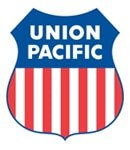
UP’s calendar-year 2011 operating ratio of 70.7 percent was but one-tenth of one-percent off its record 70.6 percent operating ratio for 2010. Operating ratio is a railroad’s operating expenses expressed as a percentage of operating revenue, and is considered by economists to be the basic measure of carrier profitability. The lower the operating ratio, the more efficient the railroad. UP’s operating ratio of 68.3 percent was a record fourth-quarter low, and almost two percentage points improved from its 2010 fourth-quarter operating ratio.
UP said it still had 1,030 employees on furlough at year-end – down from 1,500 at year-end 2010 and well below the 4,200 on furlough at the end of 2009.
“We expect continued slow but steady economic growth in 2012,” Union Pacific CEO Jim Young said.
Union Pacific operates some 32,000 route miles in 23 states in the western two-thirds of the U.S.
BNSF, which is privately held, has not yet posted its 2011 financial results. They will be added when available.
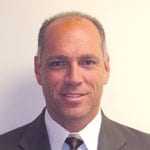 Anthony Simon, general chairperson on Long Island Rail Road, has been elected to a four-year term as chairperson of District 1 of the UTU’s Association of General Chairpersons.
Anthony Simon, general chairperson on Long Island Rail Road, has been elected to a four-year term as chairperson of District 1 of the UTU’s Association of General Chairpersons.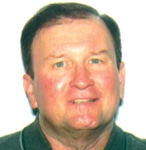
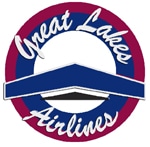 JAMESTOWN, N.D. — Great Lakes Airlines crews represented by the UTU will soon be flying in and out of Jamestown.
JAMESTOWN, N.D. — Great Lakes Airlines crews represented by the UTU will soon be flying in and out of Jamestown.
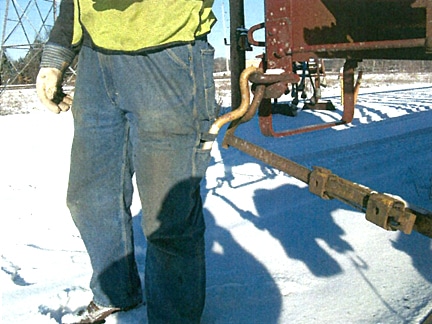
 In 2008, California voters authorized a $9.95 billion bond measure as a down-payment for a high-speed rail project linking the Sacramento (in northern California), the San Francisco Bay area and Los Angeles.
In 2008, California voters authorized a $9.95 billion bond measure as a down-payment for a high-speed rail project linking the Sacramento (in northern California), the San Francisco Bay area and Los Angeles.